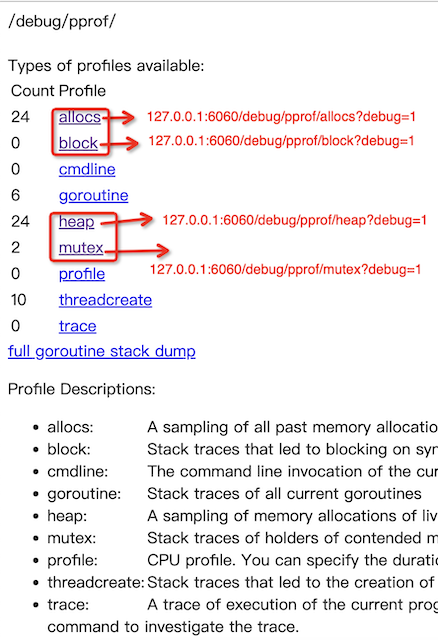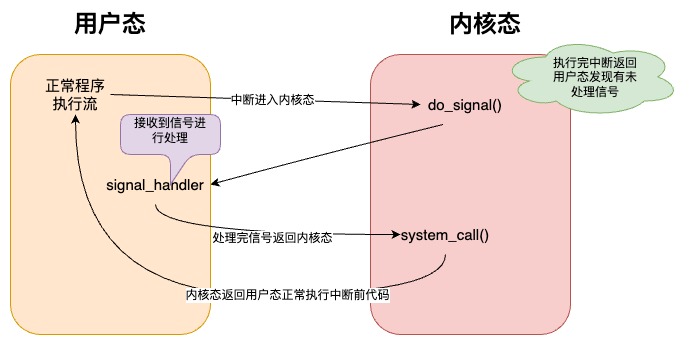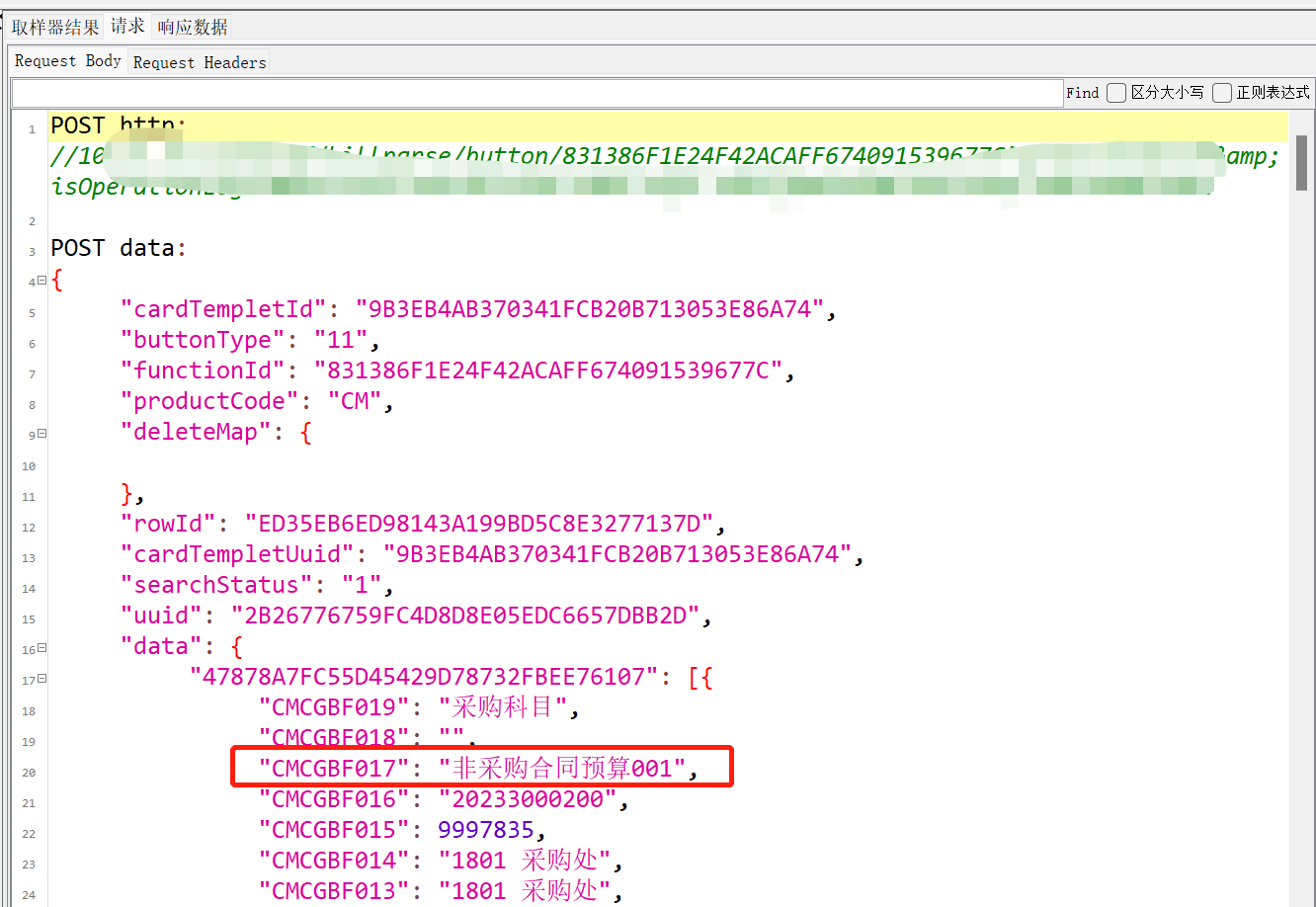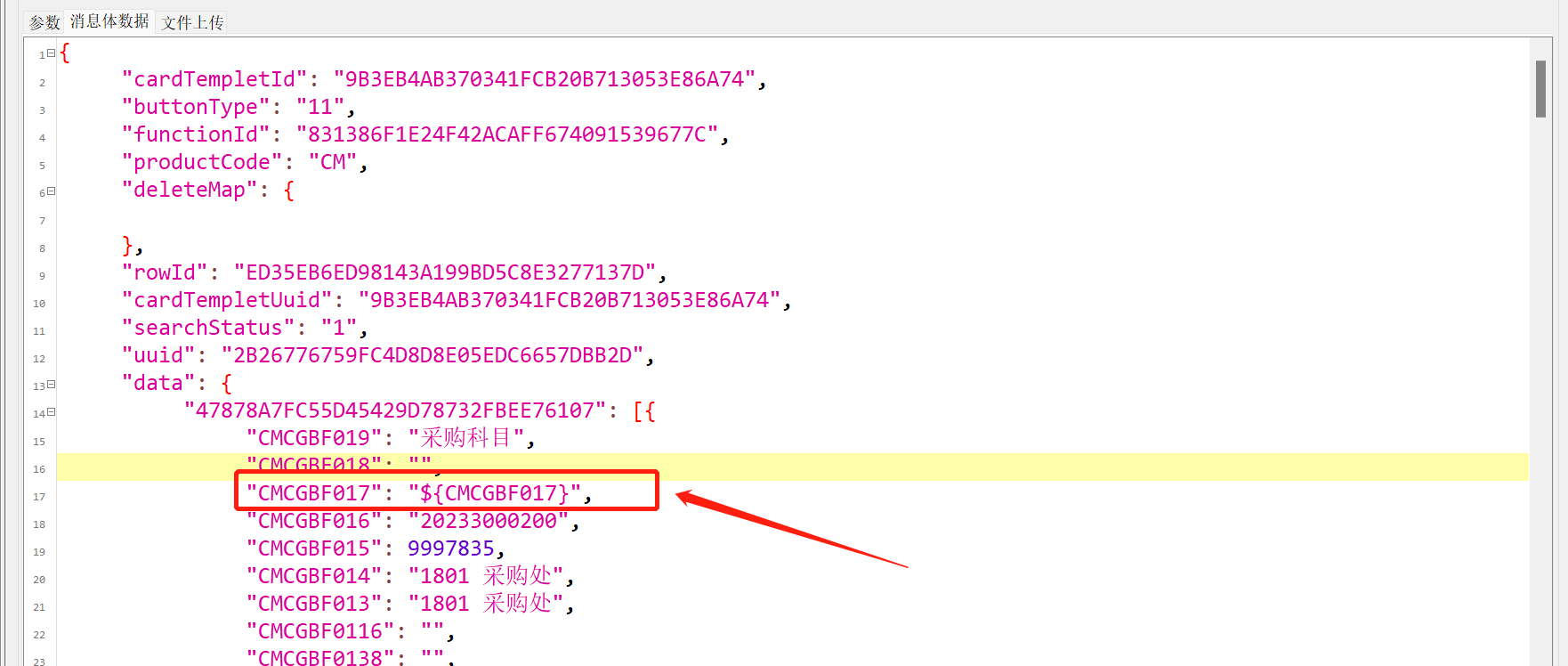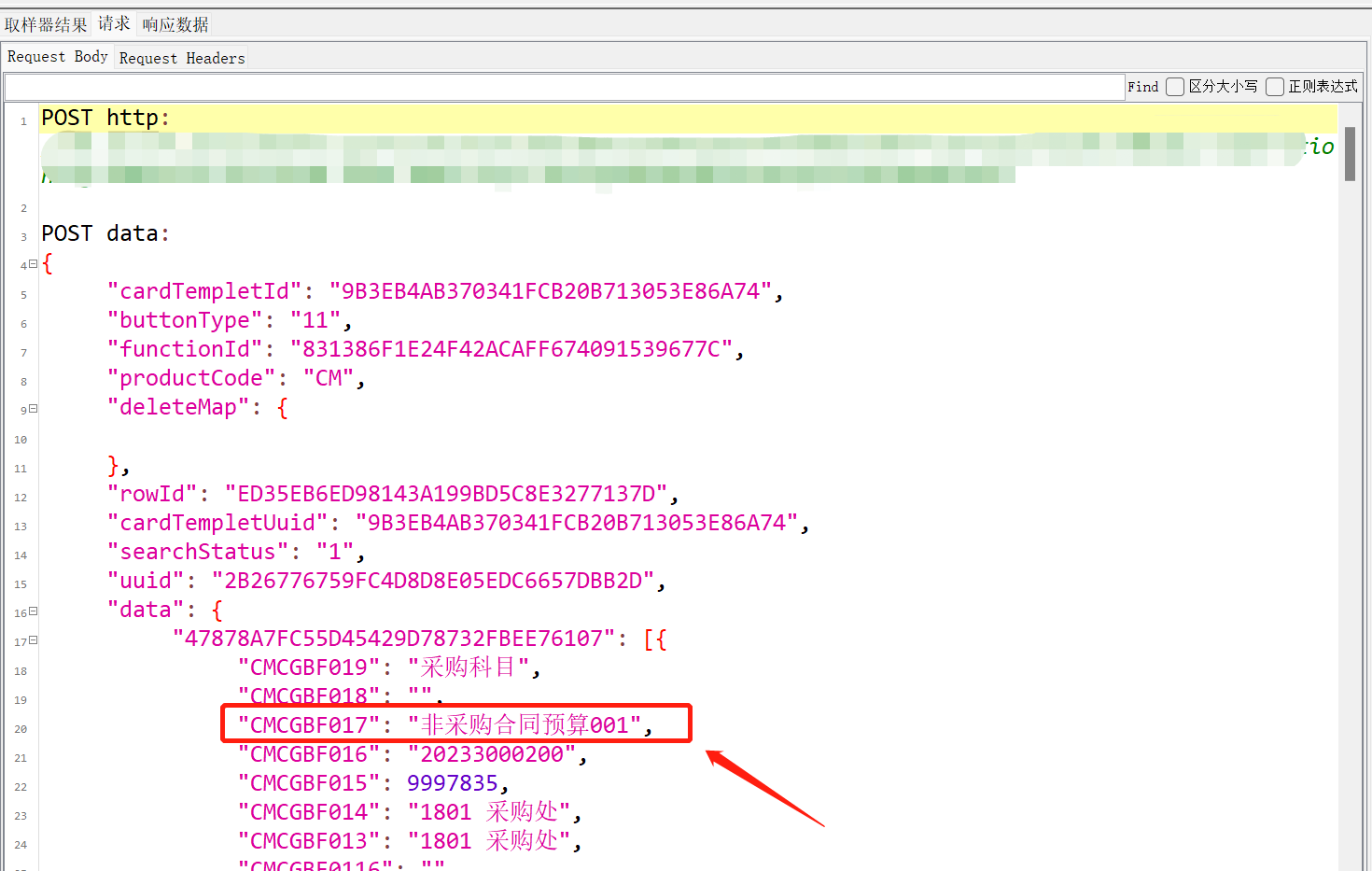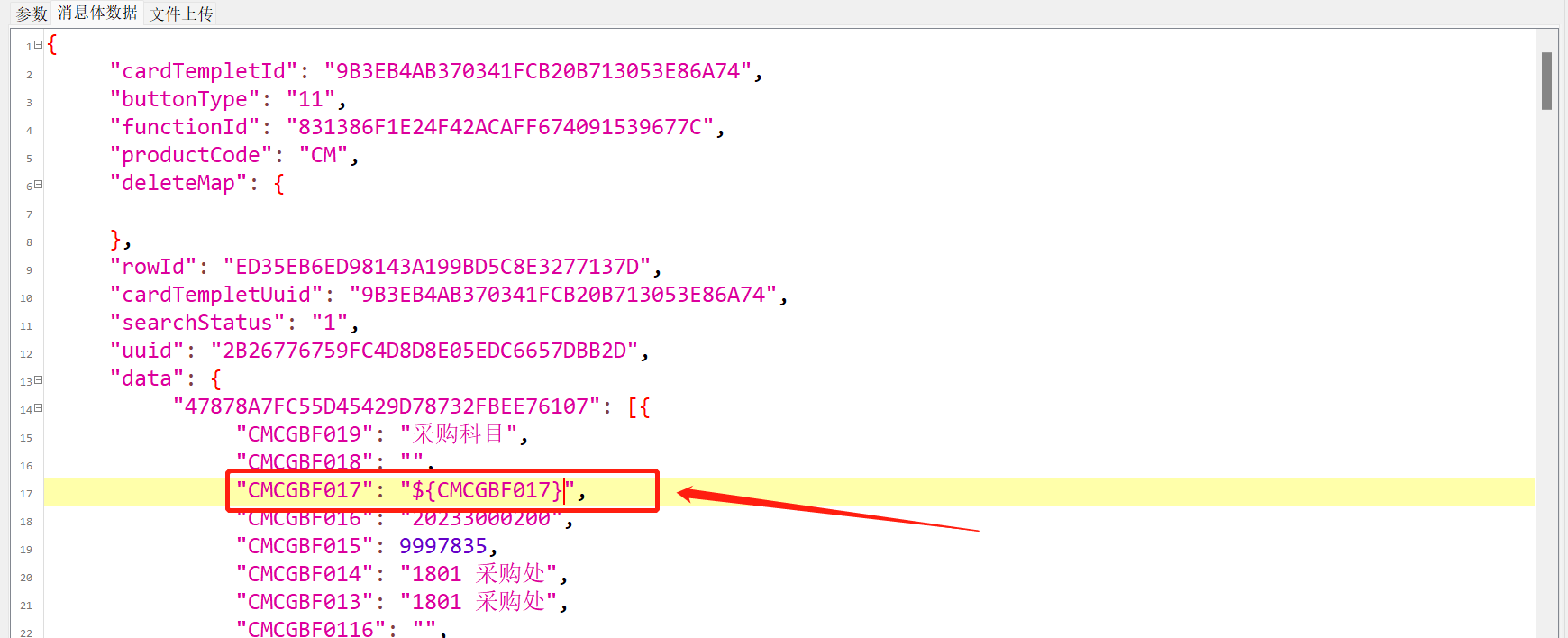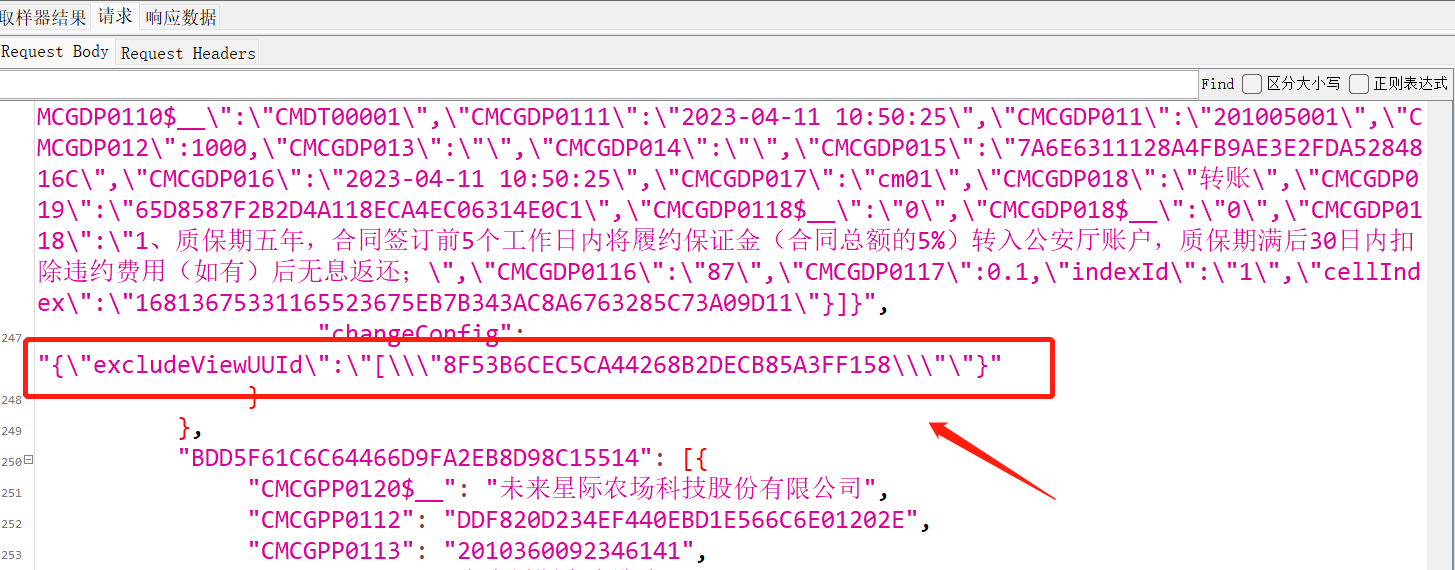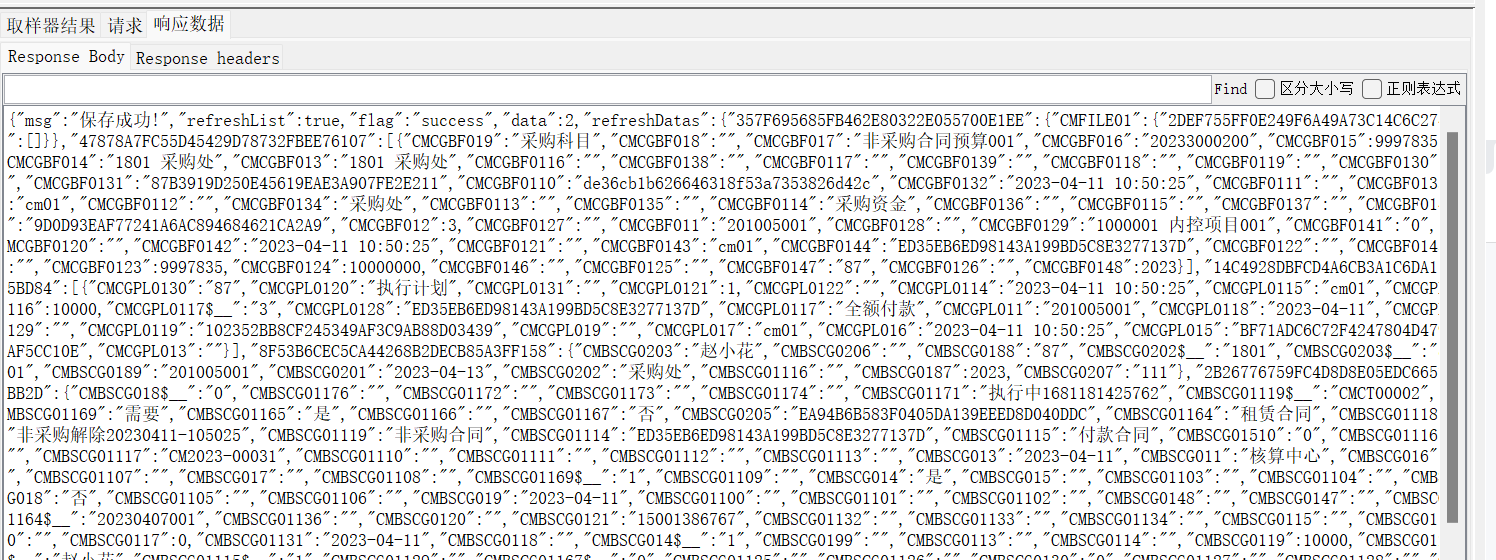漏洞说明:
跨站脚本攻击(Cross Site Scripting),为了不和层叠样式表(Cascading Style Sheets, CSS)的缩写混淆,故将跨站脚本攻击缩写为XSS。恶意攻击者往Web页面里插入恶意Web脚本代码(html、javascript、css等),当用户浏览该页面时,嵌入其中的Web脚本代码会被执行,从而达到恶意攻击用户的特殊目的。
测试步骤
访问系统网站,点击基础报告库进行编辑,使用Burp抓包并重新构造数据包

重新访问,成功触发了XSS弹窗

解决方法:
将危险内容过滤去除,用HTML转义字符串(Escape Sequence)表达的则保留
添加脚本过滤类
/// <summary>
/// Html 脚本过滤
/// </summary>
public class NHtmlFilter
{
protected static readonly RegexOptions REGEX_FLAGS_SI = RegexOptions.IgnoreCase | RegexOptions.Singleline | RegexOptions.Compiled;
private static string P_COMMENTS = "<!--(.*?)-->";
private static Regex P_COMMENT = new Regex("^!--(.*)--$", REGEX_FLAGS_SI);
private static string P_TAGS = "<(.*?)>";
private static Regex P_END_TAG = new Regex("^/([a-z0-9]+)", REGEX_FLAGS_SI);
private static Regex P_START_TAG = new Regex("^([a-z0-9]+)(.*?)(/?)$", REGEX_FLAGS_SI);
private static Regex P_QUOTED_ATTRIBUTES = new Regex("([a-z0-9|(a-z0-9\\-a-z0-9)]+)=([\"'])(.*?)\\2", REGEX_FLAGS_SI);
private static Regex P_UNQUOTED_ATTRIBUTES = new Regex("([a-z0-9]+)(=)([^\"\\s']+)", REGEX_FLAGS_SI);
private static Regex P_PROTOCOL = new Regex("^([^:]+):", REGEX_FLAGS_SI);
private static Regex P_ENTITY = new Regex("&#(\\d+);?");
private static Regex P_ENTITY_UNICODE = new Regex("&#x([0-9a-f]+);?");
private static Regex P_ENCODE = new Regex("%([0-9a-f]{2});?");
private static Regex P_VALID_ENTITIES = new Regex("&([^&;]*)(?=(;|&|$))");
private static Regex P_VALID_QUOTES = new Regex("(>|^)([^<]+?)(<|$)", RegexOptions.Singleline | RegexOptions.Compiled);
private static string P_END_ARROW = "^>";
private static string P_BODY_TO_END = "<([^>]*?)(?=<|$)";
private static string P_XML_CONTENT = "(^|>)([^<]*?)(?=>)";
private static string P_STRAY_LEFT_ARROW = "<([^>]*?)(?=<|$)";
private static string P_STRAY_RIGHT_ARROW = "(^|>)([^<]*?)(?=>)";
private static string P_AMP = "&";
private static string P_QUOTE = "\"";
private static string P_LEFT_ARROW = "<";
private static string P_RIGHT_ARROW = ">";
private static string P_BOTH_ARROWS = "<>";
// @xxx could grow large... maybe use sesat's ReferenceMap
private static Dictionary<string, string> P_REMOVE_PAIR_BLANKS = new Dictionary<string, string>();
private static Dictionary<string, string> P_REMOVE_SELF_BLANKS = new Dictionary<string, string>();
/**
* flag determining whether to try to make tags when presented with "unbalanced"
* angle brackets (e.g. "<b text </b>" becomes "<b> text </b>"). If set to false,
* unbalanced angle brackets will be html escaped.
*/
protected static bool alwaysMakeTags = true;
/**
* flag determing whether comments are allowed in input String.
*/
protected static bool stripComment = true;
/// <summary>
/// 不允许
/// </summary>
private string[] vDisallowed { get; set; }
/// <summary>
/// 允许
/// </summary>
protected Dictionary<string, List<string>> vAllowed { get; set; }
/** counts of open tags for each (allowable) html element **/
protected Dictionary<string, int> vTagCounts;
/** html elements which must always be self-closing (e.g. "<img />") **/
protected string[] vSelfClosingTags;
/** html elements which must always have separate opening and closing tags (e.g. "<b></b>") **/
protected string[] vNeedClosingTags;
/** attributes which should be checked for valid protocols **/
protected string[] vProtocolAtts;
/** allowed protocols **/
protected string[] vAllowedProtocols;
/** tags which should be removed if they contain no content (e.g. "<b></b>" or "<b />") **/
protected string[] vRemoveBlanks;
/** entities allowed within html markup **/
protected string[] vAllowedEntities;
/// <summary>
/// 是否为调试
/// </summary>
protected bool vDebug;
public NHtmlFilter() : this(false) { }
public NHtmlFilter(bool debug)
{
//List<Item> vAllowed = new List<Item>();
vAllowed = new Dictionary<string, List<string>>();
#region 允许通过数组
vAllowed.Add("a", new List<string>() { "target", "href", "title", "class", "style" });
vAllowed.Add("addr", new List<string>() { "title", "class", "style" });
vAllowed.Add("address", new List<string>() { "class", "style" });
vAllowed.Add("area", new List<string>() { "shape", "coords", "href", "alt" });
vAllowed.Add("article", new List<string>() { });
vAllowed.Add("aside", new List<string>() { });
vAllowed.Add("audio", new List<string>() { "autoplay", "controls", "loop", "preload", "src", "class", "style" });
vAllowed.Add("b", new List<string>() { "class", "style" });
vAllowed.Add("bdi", new List<string>() { "dir" });
vAllowed.Add("bdo", new List<string>() { "dir" });
vAllowed.Add("big", new List<string>() { });
vAllowed.Add("blockquote", new List<string>() { "cite", "class", "style" });
vAllowed.Add("br", new List<string>() { });
vAllowed.Add("caption", new List<string>() { "class", "style" });
vAllowed.Add("center", new List<string>() { });
vAllowed.Add("cite", new List<string>() { });
vAllowed.Add("code", new List<string>() { "class", "style" });
vAllowed.Add("col", new List<string>() { "align", "valign", "span", "width", "class", "style" });
vAllowed.Add("colgroup", new List<string>() { "align", "valign", "span", "width", "class", "style" });
vAllowed.Add("dd", new List<string>() { "class", "style" });
vAllowed.Add("del", new List<string>() { "datetime" });
vAllowed.Add("details", new List<string>() { "open" });
vAllowed.Add("div", new List<string>() { "class", "style" });
vAllowed.Add("dl", new List<string>() { "class", "style" });
vAllowed.Add("dt", new List<string>() { "class", "style" });
vAllowed.Add("em", new List<string>() { "class", "style" });
vAllowed.Add("font", new List<string>() { "color", "size", "face" });
vAllowed.Add("footer", new List<string>() { });
vAllowed.Add("h1", new List<string>() { "class", "style" });
vAllowed.Add("h2", new List<string>() { "class", "style" });
vAllowed.Add("h3", new List<string>() { "class", "style" });
vAllowed.Add("h4", new List<string>() { "class", "style" });
vAllowed.Add("h5", new List<string>() { "class", "style" });
vAllowed.Add("h6", new List<string>() { "class", "style" });
vAllowed.Add("header", new List<string>() { });
vAllowed.Add("hr", new List<string>() { });
vAllowed.Add("i", new List<string>() { "class", "style" });
vAllowed.Add("img", new List<string>() { "src", "alt", "title", "style", "width", "height", "id", "_src", "loadingclass", "class", "data-latex", "data-id", "data-type", "data-s" });
vAllowed.Add("ins", new List<string>() { "datetime" });
vAllowed.Add("li", new List<string>() { "class", "style" });
vAllowed.Add("mark", new List<string>() { });
vAllowed.Add("nav", new List<string>() { });
vAllowed.Add("ol", new List<string>() { "class", "style" });
vAllowed.Add("p", new List<string>() { "class", "style" });
vAllowed.Add("pre", new List<string>() { "class", "style" });
vAllowed.Add("s", new List<string>() { });
vAllowed.Add("section", new List<string>() { });
vAllowed.Add("small", new List<string>() { });
vAllowed.Add("span", new List<string>() { "class", "style" });
vAllowed.Add("sub", new List<string>() { "class", "style" });
vAllowed.Add("sup", new List<string>() { "class", "style" });
vAllowed.Add("strong", new List<string>() { "class", "style" });
vAllowed.Add("table", new List<string>() { "width", "border", "align", "valign", "class", "style" });
vAllowed.Add("tbody", new List<string>() { "align", "valign", "class", "style" });
vAllowed.Add("td", new List<string>() { "width", "rowspan", "colspan", "align", "valign", "class", "style" });
vAllowed.Add("tfoot", new List<string>() { "align", "valign", "class", "style" });
vAllowed.Add("th", new List<string>() { "width", "rowspan", "colspan", "align", "valign", "class", "style" });
vAllowed.Add("thead", new List<string>() { "align", "valign", "class", "style" });
vAllowed.Add("tr", new List<string>() { "rowspan", "align", "valign", "class", "style" });
vAllowed.Add("tt", new List<string>() { });
vAllowed.Add("u", new List<string>() { });
vAllowed.Add("ul", new List<string>() { "class", "style" });
vAllowed.Add("video", new List<string>() { "autoplay", "controls", "loop", "preload", "src", "height", "width", "class", "style" });
#endregion
vDebug = debug;
vTagCounts = new Dictionary<string, int>();
vSelfClosingTags = new string[] { "img" };
vNeedClosingTags = new string[] { "a", "b", "strong", "i", "em" };
vDisallowed = new string[] { "script" };
vAllowedProtocols = new string[] { "http", "mailto" }; // no ftp.
vProtocolAtts = new string[] { "src", "href" };
vRemoveBlanks = new string[] { "a", "b", "strong", "i", "em" };
vAllowedEntities = new string[] { "amp", "gt", "lt", "quot" };
stripComment = true;
alwaysMakeTags = true;
}
protected void reset()
{
vTagCounts = new Dictionary<string, int>();
}
protected void debug(string msg)
{
if (vDebug)
System.Diagnostics.Debug.WriteLine(msg);
}
//---------------------------------------------------------------
// my versions of some PHP library functions
public static string chr(int dec)
{
return "" + (char)dec;
}
/// <summary>
/// 转换成实体字符
/// </summary>
/// <param name="str"></param>
/// <returns></returns>
public static string htmlSpecialChars(string str)
{
str = str.Replace(P_QUOTE, "\"");
str = str.Replace(P_LEFT_ARROW, "<");
str = str.Replace(P_RIGHT_ARROW, ">");
str = str.Replace("\n", "<br>");
return str;
}
//---------------------------------------------------------------
/**
* given a user submitted input String, filter out any invalid or restricted
* html.
*
* @param input text (i.e. submitted by a user) than may contain html
* @return "clean" version of input, with only valid, whitelisted html elements allowed
*/
public string filter(string input)
{
reset();
string s = input;
debug("************************************************");
debug(" INPUT: " + input);
s = escapeComments(s);
debug(" escapeComments: " + s);
s = balanceHTML(s);
debug(" balanceHTML: " + s);
s = checkTags(s);
debug(" checkTags: " + s);
s = processRemoveBlanks(s);
debug("processRemoveBlanks: " + s);
s = validateEntities(s);
debug(" validateEntites: " + s);
debug("************************************************\n\n");
return s;
}
protected string escapeComments(string s)
{
return Regex.Replace(s, P_COMMENTS, new MatchEvaluator(ConverMatchComments), RegexOptions.Singleline);
}
protected string regexReplace(string regex_pattern, string replacement, string s)
{
return Regex.Replace(s, regex_pattern, replacement);
}
protected string balanceHTML(string s)
{
if (alwaysMakeTags)
{
//
// try and form html
//
s = regexReplace(P_END_ARROW, "", s);
s = regexReplace(P_BODY_TO_END, "<$1>", s);
s = regexReplace(P_XML_CONTENT, "$1<$2", s);
}
else
{
//
// escape stray brackets
//
s = regexReplace(P_STRAY_LEFT_ARROW, "<$1", s);
s = regexReplace(P_STRAY_RIGHT_ARROW, "$1$2><", s);
//
// the last regexp causes '<>' entities to appear
// (we need to do a lookahead assertion so that the last bracket can
// be used in the next pass of the regexp)
//
s = s.Replace(P_BOTH_ARROWS, "");
}
return s;
}
protected string checkTags(string s)
{
//替换不允许标签
foreach (var item in vDisallowed)
{
s = Regex.Replace(s, string.Format(@"<{0}\b(.)*?>(.)+?</{0}>", item), "");
}
s = Regex.Replace(s, P_TAGS, new MatchEvaluator(ConverMatchTags), RegexOptions.Singleline);
// these get tallied in processTag
// (remember to reset before subsequent calls to filter method)
foreach (string key in vTagCounts.Keys)
{
for (int ii = 0; ii < vTagCounts[key]; ii++)
{
s += "</" + key + ">";
}
}
return s;
}
protected string processRemoveBlanks(string s)
{
foreach (string tag in vRemoveBlanks)
{
s = regexReplace("<" + tag + "(\\s[^>]*)?></" + tag + ">", "", s);
s = regexReplace("<" + tag + "(\\s[^>]*)?/>", "", s);
}
return s;
}
private string processTag(string s)
{
// ending tags
Match m = P_END_TAG.Match(s);
if (m.Success)
{
string name = m.Groups[1].Value.ToLower();
if (allowed(name))
{
if (!inArray(name, vSelfClosingTags))
{
if (vTagCounts.ContainsKey(name))
{
vTagCounts[name] = vTagCounts[name] - 1;
return "</" + name + ">";
}
}
}
}
// starting tags
m = P_START_TAG.Match(s);
if (m.Success)
{
string name = m.Groups[1].Value.ToLower();
string body = m.Groups[2].Value;
string ending = m.Groups[3].Value;
//debug( "in a starting tag, name='" + name + "'; body='" + body + "'; ending='" + ending + "'" );
if (allowed(name))
{
string params1 = "";
MatchCollection m2 = P_QUOTED_ATTRIBUTES.Matches(body);
MatchCollection m3 = P_UNQUOTED_ATTRIBUTES.Matches(body);
List<string> paramNames = new List<string>();
List<string> paramValues = new List<string>();
foreach (Match match in m2)
{
paramNames.Add(match.Groups[1].Value); //([a-z0-9]+)
paramValues.Add(match.Groups[3].Value); //(.*?)
}
foreach (Match match in m3)
{
paramNames.Add(match.Groups[1].Value); //([a-z0-9]+)
paramValues.Add(match.Groups[3].Value); //([^\"\\s']+)
}
string paramName, paramValue;
for (int ii = 0; ii < paramNames.Count; ii++)
{
paramName = paramNames[ii].ToLower();
paramValue = paramValues[ii];
if (allowedAttribute(name, paramName))
{
if (inArray(paramName, vProtocolAtts))
{
paramValue = processParamProtocol(paramValue);
}
params1 += " " + paramName + "=\"" + paramValue + "\"";
}
}
if (inArray(name, vSelfClosingTags))
{
ending = " /";
}
if (inArray(name, vNeedClosingTags))
{
ending = "";
}
if (ending == null || ending.Length < 1)
{
if (vTagCounts.ContainsKey(name))
{
vTagCounts[name] = vTagCounts[name] + 1;
}
else
{
vTagCounts.Add(name, 1);
}
}
else
{
ending = " /";
}
return "<" + name + params1 + ending + ">";
}
else
{
return "";
}
}
// comments
m = P_COMMENT.Match(s);
if (!stripComment && m.Success)
{
return "<" + m.Value + ">";
}
return "";
}
private string processParamProtocol(string s)
{
s = decodeEntities(s);
Match m = P_PROTOCOL.Match(s);
if (m.Success)
{
string protocol = m.Groups[1].Value;
if (!inArray(protocol, vAllowedProtocols))
{
// bad protocol, turn into local anchor link instead
s = "#" + s.Substring(protocol.Length + 1, s.Length - protocol.Length - 1);
if (s.StartsWith("#//"))
{
s = "#" + s.Substring(3, s.Length - 3);
}
}
}
return s;
}
private string decodeEntities(string s)
{
s = P_ENTITY.Replace(s, new MatchEvaluator(ConverMatchEntity));
s = P_ENTITY_UNICODE.Replace(s, new MatchEvaluator(ConverMatchEntityUnicode));
s = P_ENCODE.Replace(s, new MatchEvaluator(ConverMatchEntityUnicode));
s = validateEntities(s);
return s;
}
private string validateEntities(string s)
{
s = P_VALID_ENTITIES.Replace(s, new MatchEvaluator(ConverMatchValidEntities));
s = P_VALID_QUOTES.Replace(s, new MatchEvaluator(ConverMatchValidQuotes));
return s;
}
private static bool inArray(string s, string[] array)
{
foreach (string item in array)
{
if (item != null && item.Equals(s))
{
return true;
}
}
return false;
}
private bool allowed(string name)
{
return (vAllowed.Count == 0 || vAllowed.ContainsKey(name)) && !inArray(name, vDisallowed);
}
private bool allowedAttribute(string name, string paramName)
{
return allowed(name) && (vAllowed.Count == 0 || vAllowed[name].Contains(paramName));
}
private string checkEntity(string preamble, string term)
{
return ";".Equals(term) && isValidEntity(preamble)
? '&' + preamble
: "&" + preamble;
}
private bool isValidEntity(string entity)
{
return inArray(entity, vAllowedEntities);
}
private static string ConverMatchComments(Match match)
{
string matchValue = "<!--" + htmlSpecialChars(match.Groups[1].Value) + "-->";
return matchValue;
}
private string ConverMatchTags(Match match)
{
string matchValue = processTag(match.Groups[1].Value);
return matchValue;
}
private string ConverMatchEntity(Match match)
{
string v = match.Groups[1].Value;
int decimal1 = int.Parse(v);
return chr(decimal1);
}
private string ConverMatchEntityUnicode(Match match)
{
string v = match.Groups[1].Value;
int decimal1 = Convert.ToInt32("0x" + v, 16);
return chr(decimal1);
}
private string ConverMatchValidEntities(Match match)
{
string one = match.Groups[1].Value; //([^&;]*)
string two = match.Groups[2].Value; //(?=(;|&|$))
return checkEntity(one, two);
}
private string ConverMatchValidQuotes(Match match)
{
string one = match.Groups[1].Value; //(>|^)
string two = match.Groups[2].Value; //([^<]+?)
string three = match.Groups[3].Value;//(<|$)
return one + regexReplace(P_QUOTE, "\"", two) + three;
}
public bool isAlwaysMakeTags()
{
return alwaysMakeTags;
}
public bool isStripComments()
{
return stripComment;
}
class Item
{
public string name { get; set; }
public List<string> parameter { get; set; }
}
}
源代码出自:
https://www.cnblogs.com/OleRookie/p/5970167.html
在请求时对参数的内容进行过滤:
var nHtmlFilter = new NHtmlFilter(false);
surveyPayload.PayloadContent = nHtmlFilter.filter(surveyPayload.PayloadContent);
再次请求时,已将危险代码转成HTML转义字符串的形式了



